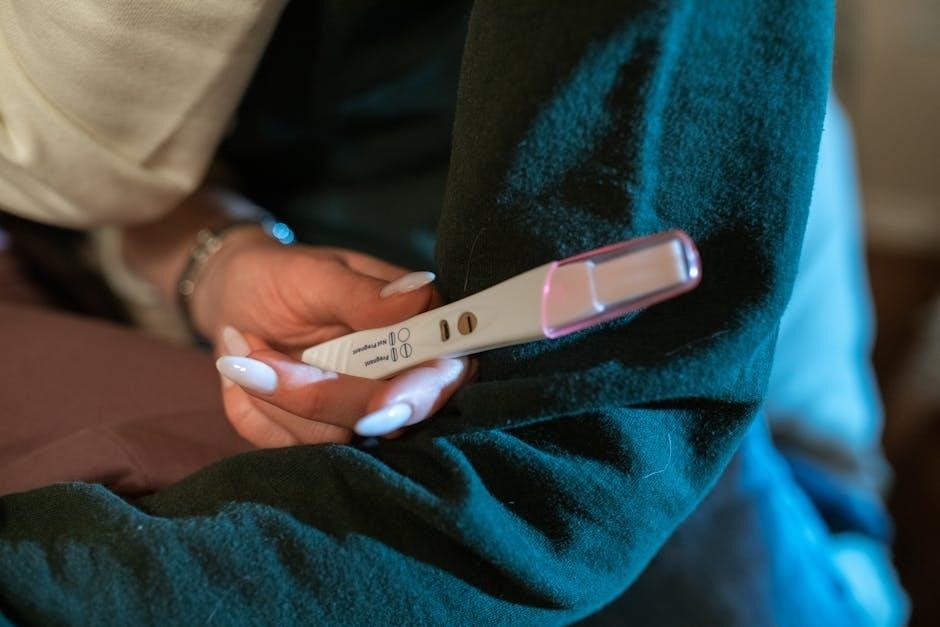Proof marks are markings on firearms indicating they passed safety tests. The Standard Directory of Proof Marks by Wirnsberger is a key resource, detailing historical and modern marks, aiding collectors, forensic experts, and gunsmiths. Its PDF format enhances accessibility, providing a comprehensive guide to understanding these essential identifiers globally.
Definition and Purpose of Proof Marks
Proof marks are official stamps or markings applied to firearms to indicate they have passed safety and performance tests. These marks verify that a weapon meets specific standards for functionality and durability, ensuring reliability for users. Historically, proof marks were used to guarantee that firearms could withstand the pressures of firing without failing. They are essential for identifying the origin, type, and compliance of firearms with national or international standards. The Standard Directory of Proof Marks provides detailed documentation of these marks, helping collectors, historians, and experts decipher their meanings. By standardizing these identifiers, proof marks play a critical role in maintaining safety and traceability in the firearms industry worldwide.
Historical Context of Proof Marks
Proof marks have a long history, dating back to the early days of firearms manufacturing. They originated as a way to ensure weapons were safe and reliable, particularly during the 19th century when standardized testing began. The first proof houses were established in European countries like Britain, France, and Germany, where firearms underwent rigorous testing. Over time, these marks evolved to reflect changes in materials, technologies, and legal requirements. The Standard Directory of Proof Marks documents this evolution, providing insights into historical testing practices and the development of modern standards. These marks not only verify a firearm’s safety but also serve as a traceable record of its origin and production history, making them invaluable for collectors, historians, and forensic experts. Their historical significance lies in their role as a bridge between past manufacturing practices and contemporary firearm identification.
Importance of Proof Marks in Firearms Identification
Proof marks play a crucial role in firearms identification, serving as tangible evidence of a weapon’s history and compliance with safety standards. They provide valuable information about a firearm’s origin, manufacturer, and the materials used in its construction. These marks are essential for tracing the provenance of a firearm, verifying its authenticity, and ensuring it meets legal and safety requirements. For collectors, proof marks help determine the age and rarity of a firearm, while for forensic experts, they aid in linking weapons to crimes or owners. The Standard Directory of Proof Marks is an indispensable resource, cataloging these marks to facilitate accurate identification and authentication. By decoding these marks, users can uncover a firearm’s past, ensuring accountability and safety in its use and ownership.

Overview of the Standard Directory of Proof Marks
The Standard Directory of Proof Marks by Gerhard Wirnsberger is a respected guide, aiding in identifying firearms manufacturers through their proof marks. It offers a detailed collection of marks from various countries and historical periods, making it a valuable resource for collectors and researchers.
Author and Publication Details
The Standard Directory of Proof Marks was authored by Gerhard Wirnsberger, a renowned expert in firearms identification. First published in 1976, the directory has become a benchmark in the field. It was translated by R.A. Steindler and is associated with the Alabama Gun Collectors Association. Wirnsberger’s work is widely acclaimed for its meticulous documentation of proof marks across various countries and historical periods. The directory has undergone updates and expansions, ensuring its relevance to modern collectors and researchers. Its comprehensive approach combines historical context with practical identification guides, making it indispensable for enthusiasts and professionals alike. The PDF version further enhances its accessibility, allowing users to reference the information effortlessly.
Key Features of the Directory
The Standard Directory of Proof Marks offers detailed documentation of proof marks from various countries, including Europe and the United States. It provides historical context, tracing the evolution of proof marks and their significance in firearms identification. The directory includes high-quality illustrations and clear descriptions, making it easier to identify marks accurately. It also covers specialized marks, such as those for nitro and black powder proofing. The PDF version enhances accessibility, with features like keyword search and zoom for detailed examination. This resource is invaluable for collectors, historians, and forensic experts, offering a comprehensive and organized guide to understanding proof marks and their implications for firearm authenticity and safety.
Structure and Organization of the Directory
The Standard Directory of Proof Marks is meticulously organized to facilitate easy reference. It is structured chronologically, with chapters dedicated to specific time periods and their corresponding proof laws. This allows users to trace the evolution of proof marks and determine the approximate age of firearms. The directory is further divided by country, with detailed sections on European nations like Britain, Germany, and France. Each entry includes descriptions of marks, their historical context, and their significance. The PDF version retains this structure, with searchable text and zoom features for closer examination. This logical arrangement makes it an indispensable tool for collectors, historians, and forensic experts, ensuring quick and accurate identification of proof marks across various regions and eras.

Historical Development of Proof Marks
Proof marks originated in the 16th century to ensure firearm safety. They evolved over time, reflecting advancements in materials and testing methods, becoming standardized by the 19th century.
Early Proof Marking Systems
The earliest proof marking systems date back to the 16th century, with simple stamps or hallmarks used to indicate a firearm had undergone basic testing. These marks varied widely by region, as no standardized system existed. In Europe, proof houses in countries like England, France, and Germany began using distinct symbols to certify firearms. These marks often included crowns, letters, or other iconic imagery, signifying compliance with local proofing standards. The lack of uniformity made identification challenging, but these early systems laid the groundwork for modern proof marking practices. Over time, these regional systems evolved into more structured frameworks, eventually leading to the standardized directories like the Standard Directory of Proof Marks, which document these historical marks for reference.
Evolution of Proof Marks in Different Countries

Proof marks have evolved distinctly across different countries, reflecting local regulations and technological advancements. In Britain, proof marks transitioned from simple crown stamps to more complex symbols indicating specific testing standards. Germany adopted a systematic approach, with marks like the crown-over-V and eagle-over-N, signifying rigorous proofing processes. France developed unique marks for black powder and smokeless cartridges, while Italy incorporated regional proof houses into its marking system. The U.S., lacking official proof houses, relied on voluntary markings, often aligned with European standards. These variations are meticulously documented in the Standard Directory of Proof Marks, highlighting how cultural and legislative factors shaped the development of proof marking systems worldwide. This diversity underscores the importance of standardized directories in deciphering these historical and modern identifiers.
Standardization of Proof Marks in the 19th Century
The 19th century marked a significant turning point in the standardization of proof marks, driven by the need for uniformity and safety in firearm production. European nations like Britain, Germany, and France established formal proofing systems, with marks indicating compliance with specific testing standards. Britain introduced its definitive proof mark, while Germany adopted the crown-over-V mark for proofed barrels. France developed distinct marks for black powder and smokeless cartridges. These standardized marks ensured consistency and reliability, aiding in the identification of firearms’ origins and safety. The Standard Directory of Proof Marks provides a detailed account of these developments, showcasing how 19th-century standardization laid the foundation for modern proof marking practices, ensuring traceability and safety in firearms production across borders.

European Proof Marks
European proof marks showcase diverse testing standards, with Britain using specific house marks and Germany employing crown-over-V symbols. These marks, documented in the Standard Directory, help identify firearms by nationality and historical context, serving as essential references for collectors and historians.

British Proof Marks
British proof marks are administered by recognized proof houses, such as the Birmingham Proof House and the London Proof House, ensuring firearms meet safety standards. These marks, documented in the Standard Directory of Proof Marks, include symbols like the crown over V, indicating inspection stages. Historically, British proof marks date back to the 19th century, with specific marks for black powder and smokeless cartridges. The directory details these marks, aiding collectors and historians in identifying firearms’ origins and compliance with historical British proofing standards. This systematic approach ensures traceability and authenticity, making British proof marks a cornerstone in firearms identification and historical research.
German Proof Marks
German proof marks are standardized symbols used to verify firearm safety and quality. The Standard Directory of Proof Marks provides detailed insights into these marks, which are regulated by the German Proof Law; Historically, proof marks evolved from simple stamps to complex indicators of testing processes. Notable marks include the crown over V for final inspection and the eagle over N for nitro proof. Post-WWII, German proof marks were adapted to align with international standards, ensuring consistency. The directory is invaluable for collectors and historians, offering a chronological overview of German proofing systems and their significance in firearm identification. This resource highlights Germany’s rigorous approach to firearm testing and its historical impact on the industry.
French Proof Marks
French proof marks are distinctive symbols used to certify firearms’ safety and quality under French law. These marks are applied by the French proof house, ensuring compliance with stringent testing standards. Historical marks include the “crowned V” for black powder firearms and the “crowned N” for smokeless powder. Post-1930, marks were standardized, with specific symbols indicating the type of proof and the testing process. The Standard Directory of Proof Marks details these marks, aiding collectors and historians in identifying French firearms. The directory also covers evolutionary changes in French proofing systems, reflecting advancements in firearm technology and testing methodologies. This resource is essential for understanding the historical and technical aspects of French proof marks, providing a comprehensive guide to their significance and application.
Italian Proof Marks
Italian proof marks are official stamps applied to firearms to confirm they meet specific safety and quality standards. These marks are regulated by the Italian proof house, ensuring compliance with national and international testing protocols. Historical marks include symbols like the “PSF” for smokeless powder and “PB” for black powder, indicating the type of ammunition tested. Modern marks reflect advancements in firearm technology, with specific codes denoting the testing process and certification. The Standard Directory of Proof Marks provides detailed documentation of Italian proof marks, aiding collectors, historians, and gunsmiths in identifying Italian firearms. This resource highlights the evolution of Italian proofing systems, offering insights into their historical development and contemporary application.
Belgian Proof Marks
Belgian proof marks are official stamps used to verify firearms’ safety and quality. The most notable mark is the Perron, historically the sole proof mark until 1810, and later used to indicate inspection. These marks are regulated by Belgian proof houses, ensuring compliance with national firearms standards. The Perron symbol, along with other specific codes, denotes the type of testing and certification. The Standard Directory of Proof Marks details Belgian marks, providing insights into their historical evolution and modern application. This resource helps collectors and historians identify Belgian firearms, offering a comprehensive guide to understanding their proofing systems. The directory also aids in dating firearms by linking marks to specific time periods, ensuring accurate authentication and historical contextualization.

Proof Marks in Specific Countries
Proof marks vary by country, with the U.S. lacking proofing houses, unlike Europe. The Standard Directory aids in identifying manufacturers and historical contexts across nations, ensuring accuracy and authenticity.
United States Proof Marks
Unlike many European countries, the United States does not have formal proofing houses, making its proof marks less standardized. However, U.S. firearms often bear marks from manufacturers or regulatory bodies, indicating compliance with safety standards. The Standard Directory of Proof Marks highlights that while the U.S. lacks centralized proofing institutions, its marks still provide valuable information about a firearm’s origin and specifications. These marks are typically simpler, such as stamps or codes, and may reference industry standards like those set by SAAMI (Sporting Arms and Ammunition Manufacturers’ Institute). Historical U.S. proof marks, though less common, can still be identified, especially on older firearms, offering insights into their production and authenticity.
Spanish Proof Marks
Spanish proof marks are essential for identifying firearms manufactured in Spain, particularly from regions like Eibar, historically known for its gunmaking industry. These marks are administered by the Eibar Proof House, which tests firearms for safety and compliance with Spanish and European standards. The marks include symbols for black powder and smokeless cartridges, indicating the type of ammunition the firearm is designed for. Spanish proof marks also feature unique identifiers for manufacturers and specific models. The Standard Directory of Proof Marks details these Spanish marks, providing insights into their historical evolution and current usage. This directory is invaluable for collectors and enthusiasts seeking to authenticate Spanish firearms and understand their production history.
Austrian Proof Marks
Austrian proof marks are administered by the Vienna Proof House, ensuring firearms meet safety and quality standards. These marks include symbols for black powder, smokeless cartridges, and specific testing procedures. The Standard Directory of Proof Marks details Austrian marks, highlighting their historical development and current use. It also covers special marks for barrels and components, aiding collectors and researchers. The directory’s organization by time periods helps date firearms, making it a valuable resource for understanding Austrian firearms production and compliance with European standards. This comprehensive guide is essential for authenticating Austrian firearms and tracing their manufacturing history.

Specialized Proof Marks
Specialized proof marks categorize firearms based on ammunition compatibility, such as nitro, black powder, and smokeless cartridges. These marks ensure safety and indicate specific testing standards, detailed in the Standard Directory of Proof Marks for precise identification and historical context.
Nitro Proof Marks
Nitro proof marks are specialized stamps indicating a firearm’s suitability for smokeless powder cartridges. They emerged in the late 19th century as firearms transitioned from black powder to more powerful smokeless ammunition. These marks are crucial for identifying weapons designed to handle higher pressures. The Standard Directory of Proof Marks details their evolution, showcasing how they vary across countries. For instance, European proof houses developed distinct nitro marks to certify firearms for modern ammunition. These marks often include specific letters or symbols, such as “NP” or “Nitro,” and are typically found on barrels or receivers. Their presence ensures safety and compliance with performance standards, making them indispensable for collectors, gunsmiths, and forensic experts analyzing firearms history and functionality.
Black Powder Proof Marks
Black powder proof marks are historical stamps verifying a firearm’s safety for black powder cartridges. These marks were prevalent before the adoption of smokeless powder and are essential for dating and authenticating antique firearms. The Standard Directory of Proof Marks extensively documents these marks, highlighting their significance in firearm history. They often feature symbols like crowns or other national emblems, varying by country and era. For instance, British and German proof houses used distinct black powder marks until the late 19th century. These marks not only ensured the firearm’s structural integrity but also adhered to regional proofing standards, making them a vital resource for collectors and historians specializing in early firearms.
Smokeless Powder Proof Marks
Smokeless powder proof marks emerged in the late 19th century as firearms transitioned from black powder to more powerful smokeless cartridges. These marks indicate a firearm’s suitability for higher pressure rounds. The Standard Directory of Proof Marks details their evolution, showcasing how countries adapted their proofing systems. For example, Germany introduced specific marks for smokeless powder, while Britain updated its proofing standards. These marks often feature distinctive symbols, such as “NP” for nitro proof, signaling compliance with modern ammunition. They are crucial for identifying firearms manufactured during this period and ensuring safety standards, making the directory an indispensable resource for collectors, historians, and firearms enthusiasts.

Modern Applications of Proof Marks
Proof marks are essential for firearm authentication, safety verification, and historical research. The Standard Directory of Proof Marks aids collectors, forensic experts, and gunsmiths in identifying and dating firearms accurately, ensuring compliance with modern safety standards while preserving historical insights.
Collectors and Their Use of Proof Marks
Collectors rely heavily on proof marks to authenticate and date firearms, ensuring their legitimacy and historical accuracy. The Standard Directory of Proof Marks serves as an invaluable resource, providing detailed information on various marks used across different countries and time periods. By referencing this guide, collectors can identify the origin and age of firearms, aiding in valuation and acquisition decisions. The PDF version enhances accessibility, allowing collectors to easily carry and reference the directory at auctions or gun shows. This resource not only enhances collectors’ knowledge but also helps prevent the purchase of counterfeit or misidentified firearms, fostering trust and confidence in their collections.
Proof Marks in Forensic Analysis
Proof marks play a crucial role in forensic investigations, aiding experts in tracing the origin and history of firearms. The Standard Directory of Proof Marks is a key tool, offering a comprehensive database of marks from various countries and periods. Forensic analysts use this directory to identify specific proof houses and determine compliance with historical safety standards. By analyzing these marks, investigators can link firearms to crimes, verify their legality, and reconstruct criminal cases. The PDF version of the directory allows for quick digital searches and comparisons, enhancing the efficiency of forensic examinations. This resource is indispensable for law enforcement, ensuring accurate and reliable evidence in criminal investigations.
Proof Marks in Gunsmithing
Proof marks are essential in gunsmithing for verifying the authenticity and safety of firearms components. The Standard Directory of Proof Marks serves as a vital reference, helping gunsmiths identify and interpret marks from various countries and historical periods. By consulting this directory, gunsmiths can ensure that parts meet original specifications or historical standards, especially during restoration or customization projects. The PDF version provides quick access to detailed information, allowing gunsmiths to verify the legitimacy of components efficiently. This resource is particularly valuable for maintaining accuracy in both modern and antique firearms, ensuring compliance with safety standards and preserving historical integrity. It bridges the gap between historical craftsmanship and contemporary gunsmithing practices.

The Standard Directory of Proof Marks PDF offers a comprehensive guide to firearm proof marks, providing detailed historical context and identification tools for collectors and experts.
Benefits of the Digital Format
The Standard Directory of Proof Marks PDF offers unparalleled convenience and accessibility. Its digital format allows users to easily search, bookmark, and reference information on various proof marks. The PDF version is lightweight and portable, enabling collectors and researchers to carry the guide on multiple devices. It also supports keyword searches, making it faster to identify specific marks. Additionally, the digital format reduces the need for physical storage, preserving the guide for future use. Regular updates ensure the content remains current, incorporating new discoveries and historical insights. This makes it an indispensable tool for firearms enthusiasts, historians, and professionals in the field. Its accessibility on platforms like Issuu further enhances its reach and utility.
How to Use the PDF Version
The Standard Directory of Proof Marks PDF is designed for easy navigation. Users can utilize built-in search functions to quickly locate specific proof marks by keyword or country. The document is organized chronologically and by region, allowing researchers to trace the evolution of marks over time. Zoom features enable detailed examination of high-resolution images. Collectors and researchers can bookmark frequently referenced sections for quick access. The PDF is compatible with all major devices, making it a versatile tool for fieldwork or office use. Its digital format eliminates the need to carry a physical copy, while hyperlinks and cross-references enhance ease of use. This makes it an essential resource for identifying and understanding firearms proof marks efficiently.
Reviews and Feedback on the PDF Version
The Standard Directory of Proof Marks PDF has received overwhelmingly positive reviews. Users praise its comprehensive coverage and ease of use. A 5-star Amazon review highlighted its indispensability for firearms collectors and gunsmiths, with one enthusiast even gifting it to their favorite gunsmith. Many appreciate the digital format’s convenience, allowing quick searches and accessibility across devices. Collectors and researchers value its detailed historical insights, while gunsmiths find it an essential reference. The PDF’s clarity and organization have been particularly commended, making it a must-have resource for anyone serious about firearms identification and history. Feedback consistently underscores its value as a timeless, authoritative guide.
The Standard Directory of Proof Marks remains a cornerstone for firearms enthusiasts and professionals. Its PDF version ensures timeless accessibility, preserving historical knowledge for future generations while aiding collectors, researchers, and gunsmiths in understanding and authenticating firearms. This resource continues to be invaluable for education and reference, solidifying its legacy as an indispensable tool in the field.
The Standard Directory of Proof Marks is an indispensable resource for identifying firearms manufacturers and understanding their historical context. It provides a detailed compilation of proof marks from various countries, including Britain, Germany, France, Italy, and Belgium, offering insights into their evolution and significance. The directory is organized chronologically, making it easier to determine the age and origin of firearms. Its digital PDF format enhances accessibility, allowing collectors, researchers, and gunsmiths to reference the information conveniently. The guide is particularly valuable for forensic analysis and authentication, ensuring its relevance in modern applications. By documenting proof marks, the directory preserves firearms history and aids in maintaining safety standards in the industry. Its comprehensive nature makes it a trusted tool for both enthusiasts and professionals alike.
Future of Proof Marks and Their Documentation
The future of proof marks and their documentation lies in digital advancements and global collaboration. The Standard Directory of Proof Marks PDF exemplifies this trend, offering a portable and searchable format that enhances accessibility for collectors, researchers, and forensic experts. As technology evolves, integrating proof mark databases with AI-driven recognition tools could revolutionize firearms identification. Additionally, online platforms and collaborative efforts among historians, museums, and institutions will ensure the preservation of historical proof mark data. The digital format also facilitates regular updates, keeping the directory relevant as new discoveries are made. This ongoing documentation will remain crucial for maintaining firearms safety standards and historical accuracy, ensuring that proof marks continue to serve as vital identifiers for generations to come.


